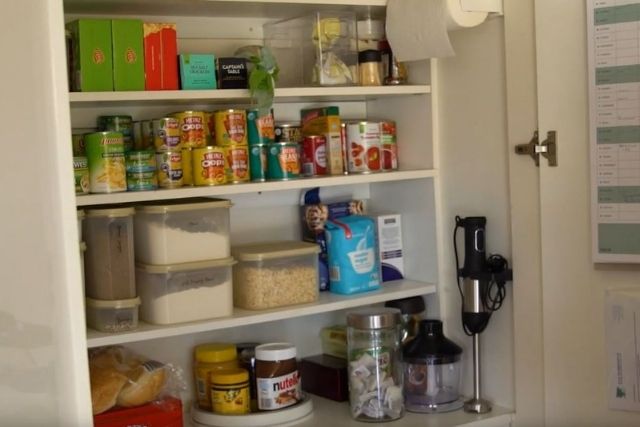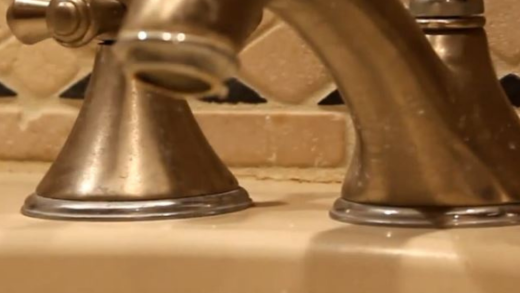Kitchens function best when they’re organized and easy to manage. Keeping track of where things are and what needs replacing saves time and money. To get your kitchen organized, start with your pantry. Take things off the shelves, see what you need and what needs to be tossed, and then follow these tips for organizing a pantry.

Designated zones turn a jumbled pantry into a streamlined food and appliance storage area. Learn how to organize pantry space in zones for efficient meals and snack times. Zoning your pantry helps you see what food you have, what you need to restock, and where the groceries belong. Start with these seven categories and add your own as needed. Use baskets, glass canisters, plastic containers, and other storage tools to make your pantry work for you.
Understand the 7 Pantry Zones
Divide your pantry into zones to keep your food organized and reduce meal preparation time. First, identify food and cooking categories that suit your lifestyle (such as weeknight dinners, portable lunches, and baking). Next, designate an area for each, with the most often-used zones easiest to get to. Finally, label each zone to keep the sections straight.
If you have categories you need to separate out that aren’t listed here, add them to your planning and create space for them. How to organize pantry space most efficiently will depend on determining storage solutions that suit your needs.
A pantry door organizer might be an easy-access place to store after-school snacks for kids.
Entertain on the Fly
Planning how to organize pantry shelves includes anticipating food-related problems and emergencies. Stock a selection of fast-fix appetizers, napkins, toothpicks, and trays in baskets. Store them on a top shelf so they don’t take up room where products you use daily should go. When guests arrive, pull a basket down, and you’re ready to get the party started.
Be Prepared for Baking
When determining how to organize a pantry, remember that many choices are available. Choose ones that make sense for each pantry zone you create. Keep dry ingredients in clear, airtight containers that stack neatly so you can see when your stock is low and you need to replenish with new supplies. Place mixes, frostings, and other ingredients on a nearby shelf. You can use pantry shelf risers to organize and stack ingredients on top of each other.
Make Weeknight Meals Super-Easy
Meal planners will love this tip for how to organize a pantry that’s on the smaller side. After grocery shopping, put a week’s worth of dinner fixings front and center in sturdy mesh bins. Attach a label and the recipe. Divide each bin by meal so everything you need will be right there when it’s time to start cooking. Instead of doing this at the top of each week, you can keep the bins stocked with ingredients for your family’s go-to meals like spaghetti and meatballs or chicken noodle soup.
Coordinate Canned Goods
At some point in your pantry organization plans, you’ll have to make room for general food staples with long shelf life, especially canned goods. Group food by type (veggies, fruits, soups, etc.) and arrange in rows on the shelf. Use stair-step shelves to put the back row of cans in view. Be sure to rotate older items to the front when you stock up at a big box store so you use what you already have before opening newer items.
Keep larger items on the pantry floor, such as cases of soda or water bottles, and save shelf space for smaller items.
Corral Non-Perishable Products Together
Another good suggestion for how to organize a pantry is to make room for non-edible products. Store bags, utensils, and napkins together to make packing easier. Place them in a basket with handles to quickly grab everything during busy mornings. This arrangement also makes preparing weekend lunches and sports practice snacks a snap.
Prep for Quick Breakfasts
Keep morning meal supplies in an easy-access spot to find everything you need, even in a pre-coffee haze. Breads fit in an undershelf basket, and a double-decker turntable makes the most of a corner, housing honey, peanut butter, and jelly for toast and waffles. Save the shelf space for boxy items such as cereal, pancake mix, and instant oatmeal.
Use this pantry organization idea to create a convenient coffee station for your morning brew. Stash single-serving pods, sweetener, and stirrers together in a container to bring to the counter to make the perfect cup.
Hang Tools and Utensils
Don’t take up precious shelf space with your cookware. Instead, hang bulky or seldom-used utensils from hooks mounted on the wall or back of the door. If space allows, store specialty appliances in the pantry, too, including slow cookers, blenders, air fryers and steamers. Your most-used pots, pans, utensils, and bakeware should remain in your kitchen.


